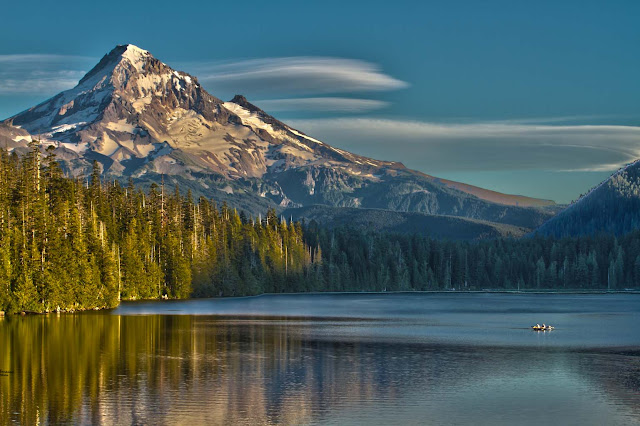On the coast of Oregon, there’s an odd natural hole that
seems to be draining the sea. Thor's Well is located in the Cape Perpetua
Scenic Area, just three miles south of Yachats, a natural bowl-shaped hole
carved out of the rough basalt shoreline. It’s a gaping; seemingly bottomless
sinkhole swallows the unbroken stream of seawater around it. This is called
“Thor’s Well” a very dangerous natural wonder is known, is not bottomless. Thor’s Well is also known as the “drainpipe
of the Pacific” and some call it “Gaping Hole”. About 20 Feet deep Thor’s Well
is actually a hole in the rock that only appears to drain water from the ocean.
Although, the well is not quite as magic as it seems, but it still manages to
produce amazing sights however not for the faint of heart!
According to Gary Hayes, a publisher of Coast Explorer
Magazine, the feature likely began out as a sea cave dug out by the waves
before the roof eventually collapsed, leaving openings at the top and bottom
through which the ocean surges and sprays. However, it’s a circular shape
aside, not so different from the other features around it- rugged Cook's Chasm,
a spouting horn and adjacent Devil's Churn - but its shape and location, right
against the Pacific Ocean, result in some pretty rare behavior.
Although it’s a treacherous spot, but not for the reasons
people generally think. Because, the past incidents took place here, due to
people foolishness, they have been hit sneaker waves while looking at the
feature. Those people didn’t get sucked into hole, got plenty of scrapes and
cuts against the sharp volcanic rock. After all, it's the ocean that's
dangerous, not Thor's Well. A sneaker wave can drag anybody into watery grave
anywhere along the Oregon coast, whether you're standing at the edge of a chasm
or just walking down the beach. Thor's Well is unique by shape and behavior
only - otherwise, it's just another fascinating hole in the basalt.
The Thor’s Well is most amazing site at high tide during storms;
it washes water violently over the rocks and funnels into the hole. Moreover,
during the sudden torrents, unwary visitors to the site run the risk of being
swept right into the maelstrom. Nevertheless of high risks place, photographers
and nature lovers continue to flock to the spectacular fountain to see the
aggressive waters that live up to their godly namesake’s stormy personality. There
are plenty of other rugged and beautiful sites all around it, but Thor's Well
seems to be special. Maybe there is something mystical about it - but that
power comes courtesy of the ocean, not the hole that it carved in the rock.




























































